We’ve visited several of the villages around Voutas over the nearly ten years of ‘Explore !’ – to Kitiros and Lagadas (April 2012), Sklavopoula (June 2015), Kalamiou and Moustakos (April 2017), – and a short walk around Voutas itself (November 2015) which will tell you more about the recent history of the village.
Here’s a circular walk of around 3 hrs, high above the valley, with Voutas below, which takes in three more – Livadi, Faleriana and Platanos – although these are ‘settlements’ rather than villages, and are sadly now largely uninhabited.
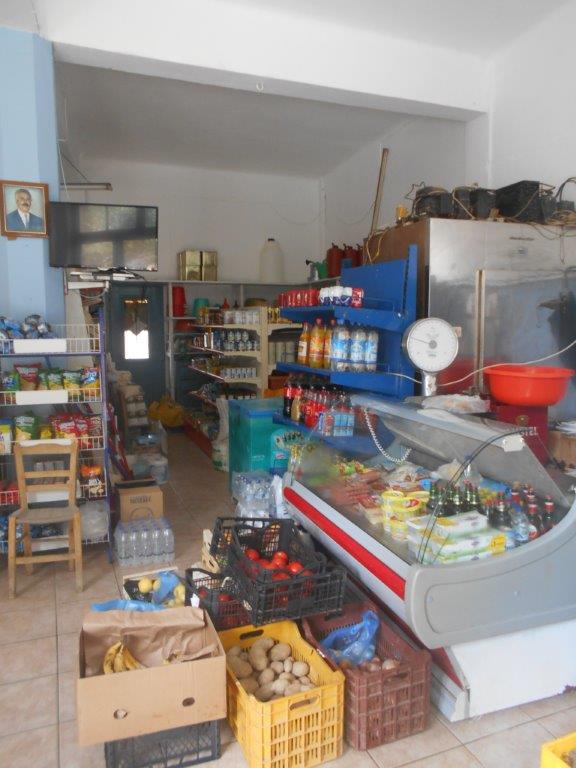
From the ‘platea’ in Voutas, and maybe after a leisurely coffee at the kafenion (also the village shop), take the road you came in on, as far as the large church of the ‘Panagia’. The main celebration here is on the 21st November; after the service, refreshments are served in the adjacent former school, which also houses the local museum.
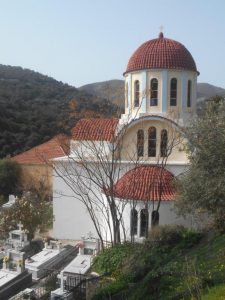
If there’s ever a chance to visit, look inside, it’s fascinating; the classroom is much as it was when the school closed in 1978, on the walls are photos of village life, and tools/artefacts displayed show life in what was once a busy and thriving local community.
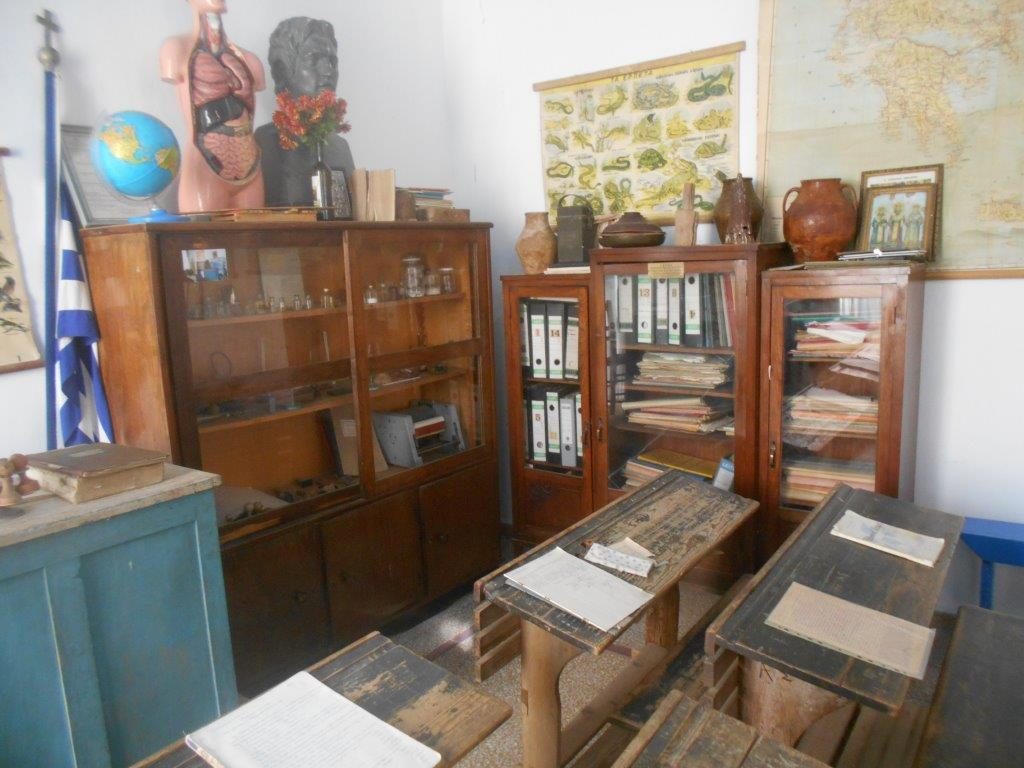
Back to the walk; take the lane opposite the church, rising to the small wayside chapel of Ag. Kiriaki, and continue uphill as the road bends right to a ‘cross-tracks.’
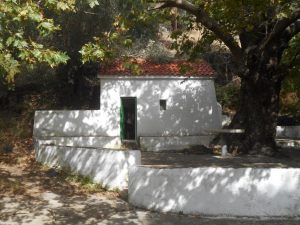
Keep ahead, easier now, but then climbing again to where a track leads off right to the isolated Agios Pavlos. Voutas is now far below, with Sklavopoula on the horizon across the valley, above Kitiros and Lagadas. A few minutes later, a short climb will bring you into Livadi; our route continues ahead, but first, take the path (right) into the now deserted village.
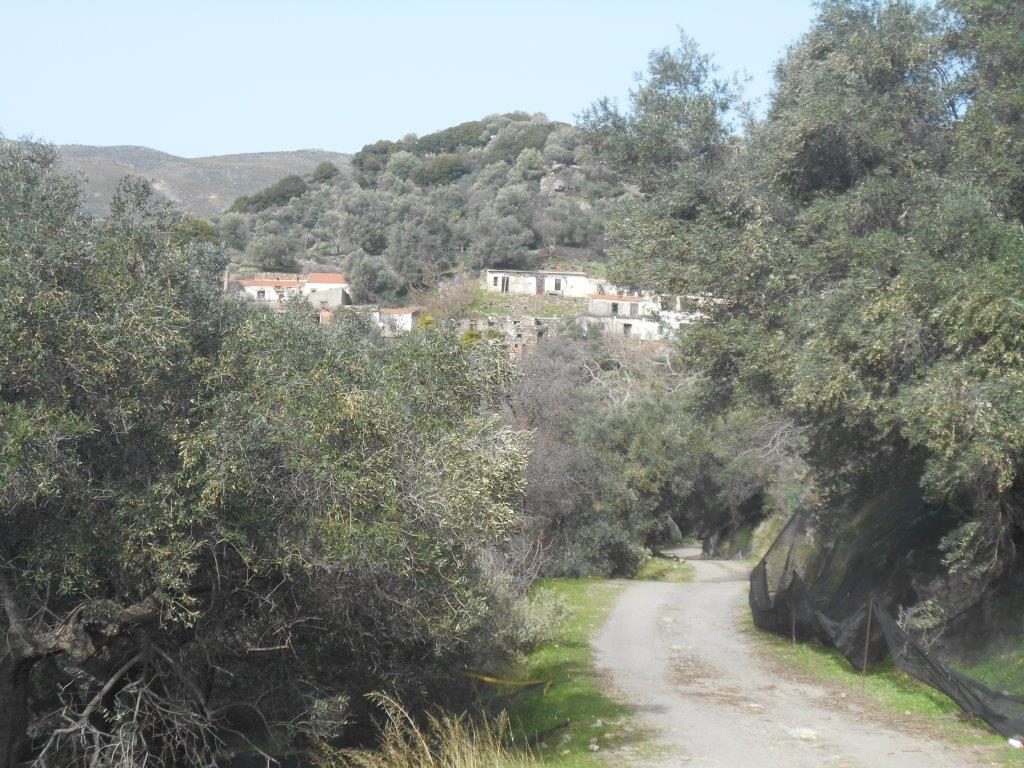
The population here in 1960 was 40 adults and thirty children, the inhabitants’ farmers growing olives, and breeding sheep and goats.
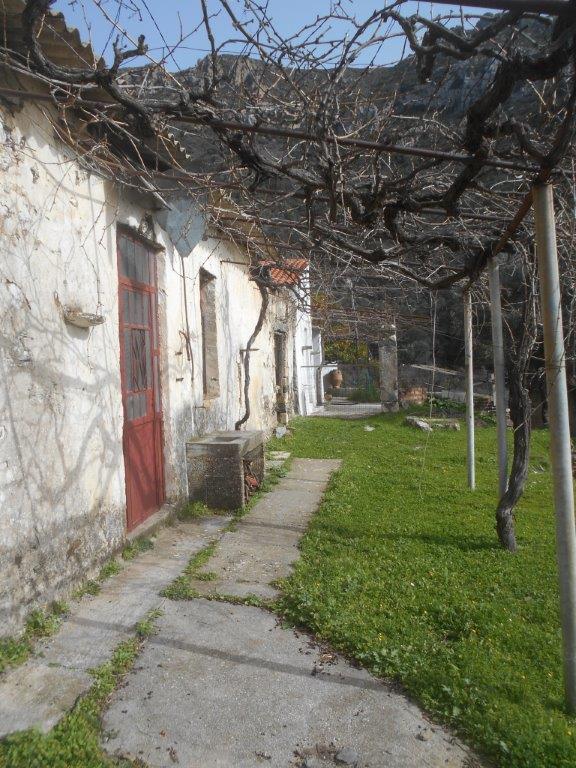
From 1970 people began to leave the village – there was no asphalt road to Voutas, and water came only from wells/springs – and the last resident left in 2005. Look around, but take care, as much of the stonework is loose and dangerous.
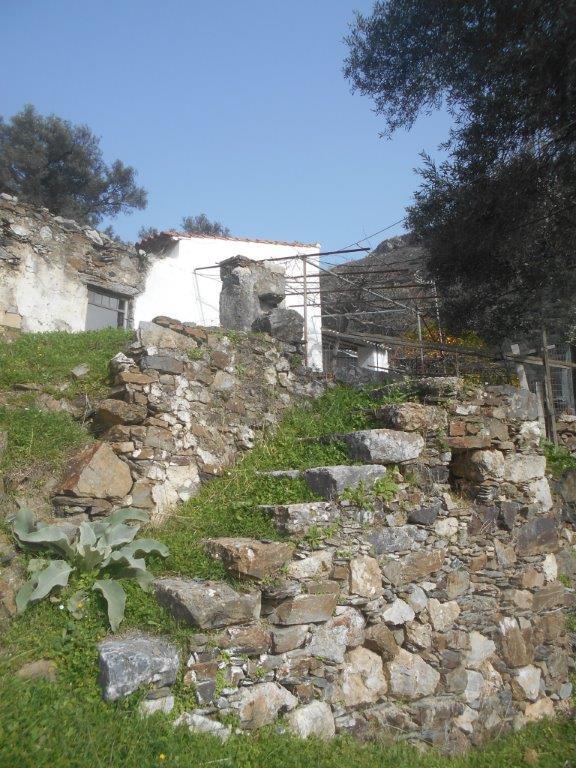
Leave Livadi in the same northerly direction, soon with the third village – Platanos – far below, and the next – Faleriana – straight ahead, as the track contours around the hillside.
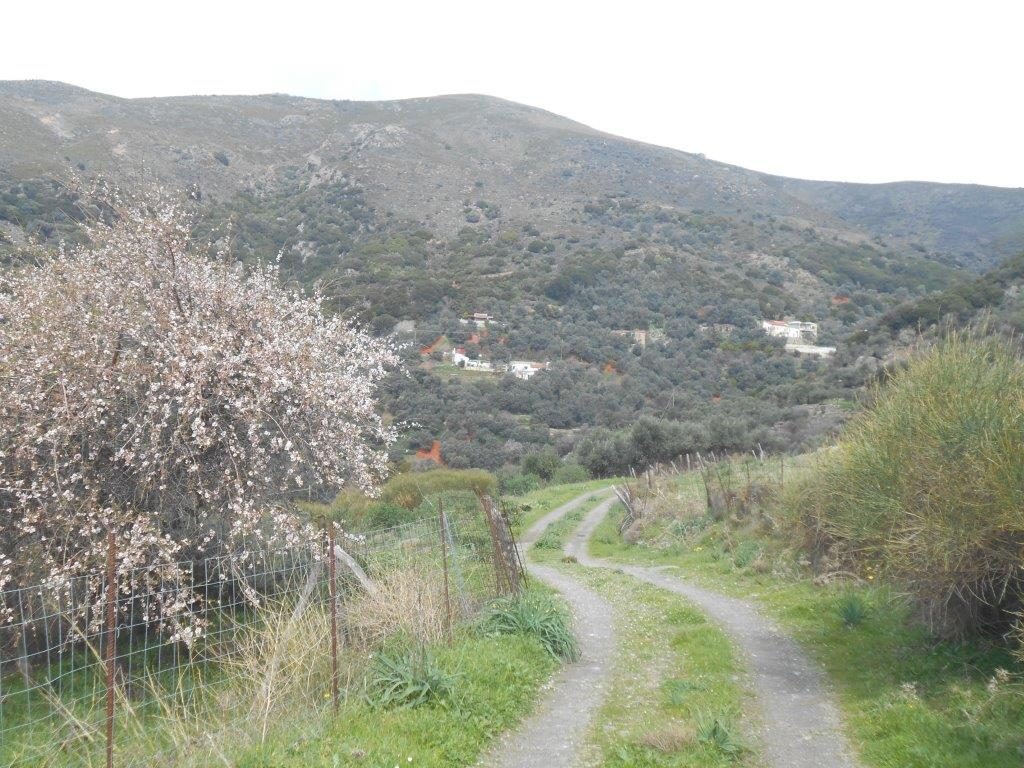
In spring, look out for the magical/mystical/medicinal Mandrake plant, noted by metaphysical poet John Donne, c.1600 – “Get with child a mandrake root …”
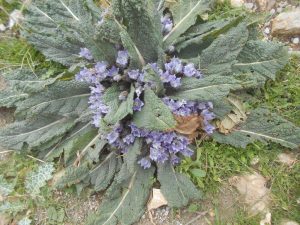
Friends rented a house in Faleriana a couple of winters ago, and spent an interesting few months there, with no permanent residents. “Two men, both in their 70s, came to stay at various times,” they later told me, “in true Greek style they didn’t get on with each other …”
The track winds below the village, passing (in season) heavily-laden orange trees, then climbs to a ‘Y’-junction. Access to Faleriana is from here, but it’s a lengthy uphill diversion, and apart from the churchyard, there’s little to see. Better to head downhill on the stony path, to another Y-junction (keep up right this time) then descending through olive groves to reach the little church of Profitis Ilias at Platanos.
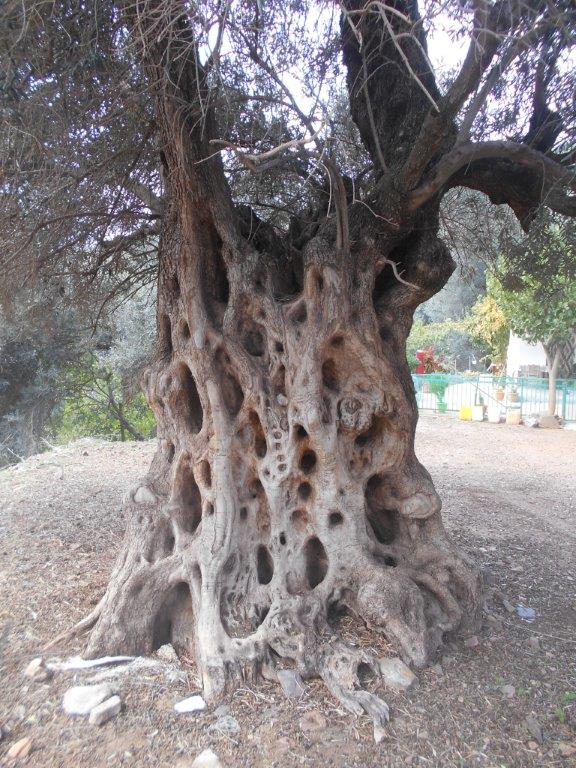
Below, turn left into the village ‘platea’ to see an ancient olive tree, a fine example of nature’s art. Return below the church, then walk pleasantly along the lane to meet the ‘main’ road and turn left for a 20-minute stroll back into Voutas.
Approaching the village, you’ll pass a memorial recently erected (2018) to mark the centenary of the KKE (Communist Party of Greece), and also to commemorate the Battle of Voutas in January 1948, during the Greek Civil War (1946-49). The inscription (translated) reads:
“Honour and Glory to the dead of the Greek Democratic Army who fought in the Battle of Vouta in January 1948, the dead from Selino guerillas of DSE, unbending in the class struggles.”
Engraved are the names of 41 men from local villages, the majority from Voutas.
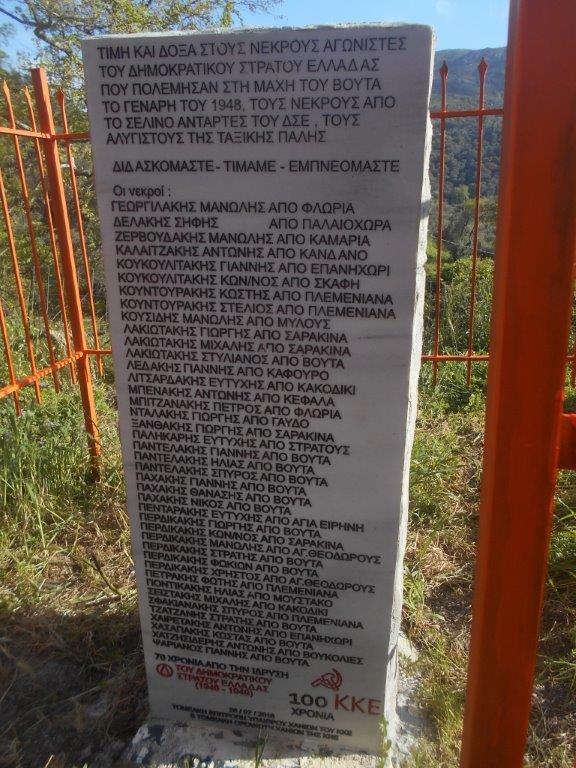
The only (and brief) reference I’ve found to this event is in “The Eagles of Crete” by Colin Janes (pp. 100-102), a history of the Civil War on the island. Enquiries locally have met with a reluctance to discuss these times. United during the brutal German occupation, the ensuing Civil War split families, neighbours and friends and were dark days in Crete.
Better not to go down that road …. but just follow the one ahead into Voutas, relax at a cafe, and reflect on a walk along paths almost certainly new to you.

Christmas Contest Winners!
Entries from ten different countries confirmed that Paleochora is popular with visitors from all over the world, and a wide variety of memories made Markella’s choice very difficult, so much so that we have a Winner, and we decided to also have two very close Runners-Up.
Winner: John & Avril Steele (UK)
“ 25 years of memories, walking through olive groves with
friends, discovering ancient churches and frescos. All for our delight.”
Markella: “There must be something special in this south-west spot of Crete making someone
and his friends coming for 25 years.”
Runners-up :
Heidi Loevstad (Norway)
“Walking the Anidri Gorge with my 8-year old grandson and my
79-year old Mom, summer 2018.”
Markella: “Anidri Gorge! Walks around Paleochora are for all ages.”
Lala Frazer (New Zealand)
“Re-tracing the footsteps of my father-in-law who was
sheltered by local Cretans after the Battle of Crete.”
Markella: “We are really well-known for our hospitality, and it seems in difficult periods
we are able to help and stay unforgettable.”
John & Avril will receive this splendid winners’ cup:
Heidi & Lala will receive a complimentary copy of the Paleochora Explore! ebook (so watch out for an email, guys).
Thanks to all those who entered, and to Markella, and Happy Exploring in 2019
Finally, to paraphrase lines from the Bee Gees and Pussycat groups ……
“ We will remember Paleochora ……. until the end of time ……”

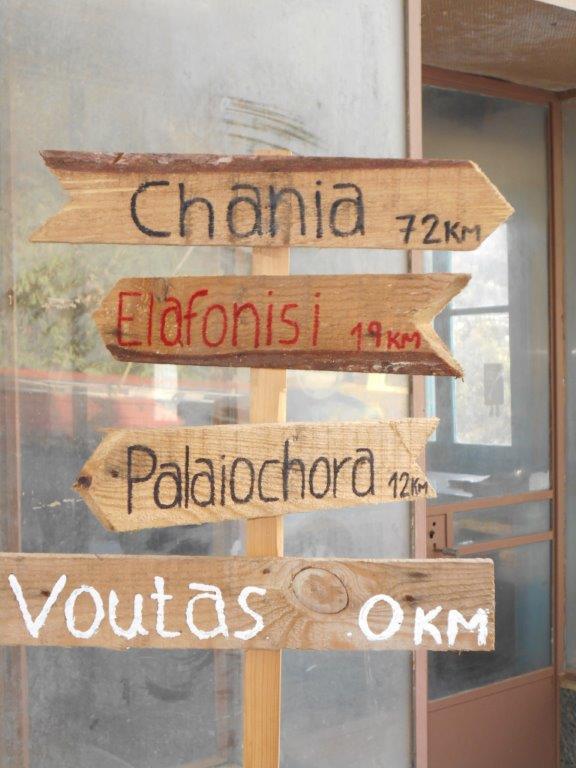


Recent Comments